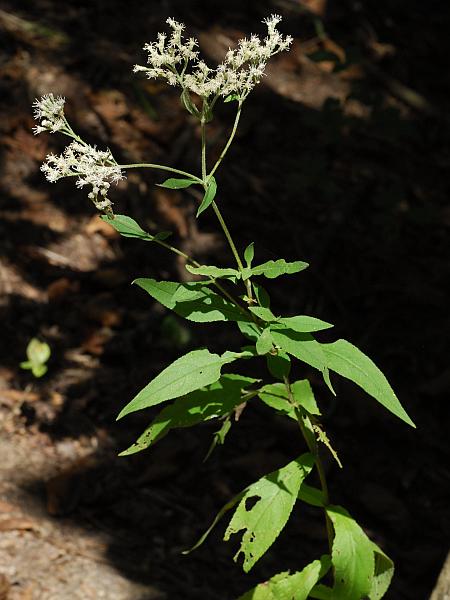Eupatorium xtruncatum
Hybrid Boneset

Native
CC = n/a
CW =
MOC = 0
© SRTurner
Eupatorium xtruncatumHybrid Boneset | |
 |
Native CC = n/a CW = MOC = 0 |
© SRTurner |
|
Family - Asteraceae/Eupatorieae Habit - Forb. Stems - Ascending to erect, to 1 m, moderately to densely pubescent with curled to spreading hairs, sometimes branched in upper half.
Leaves - Opposite, sessile, simple, lanceolate to elliptic to obovate, the bases sessile and often expanded but not perfoliate, the margins entire or toothed, the abaxial surface finely pubescent.
Inflorescence - Terminal corymbiform panicle of heads. Involucral bracts lanceolate, hairy.
Heads - Discoid, typically containing 8-11 florets.
Fruits - No info yet. Flowering - August - September. Habitat - Forest margins, roadsides, ditches, moist disturbed areas. Origin - Native to the U.S. Lookalikes - Eupatorium serotinum, E. perfoliatum, other members of the genus. Other info. - This plant is a hybrid between Eupatorium serotinum and E. perfoliatum. It has been collected in a few widely scattered locations throughout Missouri and eastward to the Atlantic coast. It is uncommon nearly everywhere. The plant seems to pop up sporadically (but rarely) when the two parents grow within reasonable proximity to each other. Photographs taken at Big Cane Conservation Area, Butler County, MO, 9-7-2019 (SRTurner). |